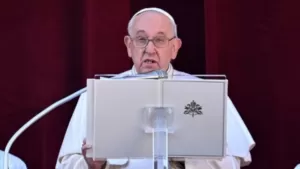Detailed Account of the Cause of Pope Francis’s Death

Pope Francis, born Jorge Mario Bergoglio, passed away on April 21, 2025, at 7:35 AM CEST in his residence at the Vatican’s Casa Santa Marta at the age of 88. While the Vatican has not released an official medical statement specifying the exact cause of death, available information from credible sources, including Vatican Media, Reuters, Catholic News Agency, and posts on X, points to a combination of chronic respiratory conditions and recent severe health complications as the primary contributors to his passing. Below is a comprehensive examination of the factors leading to his death, based on his medical history and recent health struggles.
Chronic Respiratory Conditions
Pope Francis’s health challenges were rooted in a significant medical event from his youth. In his early 20s, while training to become a priest in Argentina, he contracted a severe respiratory infection that led to a life-threatening case of pleurisy, an inflammation of the tissue surrounding the lungs. This condition necessitated the surgical removal of part of his right lung, a procedure performed in the 1950s when medical technology was less advanced. The partial pneumonectomy left him with reduced lung capacity, making him more susceptible to respiratory infections and chronic lung conditions throughout his life.
This underlying vulnerability manifested in recurring health issues during his papacy, particularly in his later years. Francis frequently experienced shortness of breath and fatigue, especially during strenuous activities such as international travel or prolonged public appearances. His condition was managed with medications and careful monitoring, but it remained a persistent challenge, limiting his physical resilience.
Recent Health Deterioration
In the final years of his life, Pope Francis’s respiratory health deteriorated significantly, compounded by age-related frailty. From 2021 onward, he faced multiple hospitalizations for respiratory infections, including bronchitis and influenza, which often required antibiotic treatment and oxygen support. His mobility also declined, leading to his frequent use of a wheelchair or cane due to sciatica and knee pain, which indirectly strained his respiratory system by limiting physical activity that could maintain lung function.
The most critical episode occurred in early 2025, when Francis was hospitalized for an extended period due to double pneumonia—a severe infection affecting both lungs. This condition, reported by Vatican sources and corroborated by outlets like The New York Times, was particularly dangerous given his compromised lung capacity. Double pneumonia causes inflammation and fluid buildup in the lung’s air sacs, impairing oxygen exchange and placing significant strain on the heart and other organs. For an 88-year-old with a history of lung surgery, recovery from such an infection would have been arduous, even with advanced medical care.
During this hospitalization, Francis reportedly required intensive treatment, including supplemental oxygen and possibly mechanical ventilation support, though specific details remain undisclosed. While he was eventually discharged, sources close to the Vatican noted that his recovery was incomplete, leaving him weakened and prone to further complications. His public appearances in early 2025 were limited, and he relied heavily on aides to manage his schedule, a sign of his diminished stamina.
Final Days and Immediate Cause
In the days leading up to his death, Francis’s condition reportedly worsened rapidly. Vatican insiders, cited by Catholic News Agency, described him as experiencing increasing respiratory distress, likely exacerbated by his chronic lung condition and the lingering effects of his recent pneumonia. The decision to remain at Casa Santa Marta rather than return to the hospital suggests that his medical team may have shifted to palliative care, focusing on comfort rather than aggressive intervention, in line with Francis’s known preference for simplicity and acceptance of mortality.
While no autopsy results or official medical report have been made public, the most likely immediate cause of death was respiratory failure, a common outcome of advanced chronic lung disease compounded by recent infections like double pneumonia. Respiratory failure occurs when the lungs cannot adequately oxygenate the blood or remove carbon dioxide, leading to systemic organ shutdown. In Francis’s case, his reduced lung capacity, weakened immune system, and age-related decline would have made him particularly vulnerable. Heart failure, often a secondary complication in such cases due to the strain on the cardiovascular system, may also have played a role, though this is speculative without confirmation.
Vatican’s Silence on Specifics
The Vatican’s reticence to provide a detailed medical cause of death aligns with its historical practice of maintaining privacy around papal health. Unlike secular leaders, popes are not typically subject to public autopsies unless foul play is suspected, and no such allegations have been substantiated in Francis’s case. Posts on X claiming earlier unannounced death or conspiracies lack credible evidence and have been dismissed by Vatican officials as misinformation.
Instead, the Vatican’s focus has been on the spiritual and ceremonial aspects of Francis’s passing, emphasizing his legacy and the preparations for his funeral and the conclave. Cardinal Kevin Farrell’s announcement on April 21, 2025, described Francis as having “returned to the house of the Father,” framing his death in theological rather than clinical terms.
Contributing Factors and Context
Beyond his respiratory issues, other factors likely contributed to Francis’s decline. His advanced age—88 at the time of death—naturally reduced his body’s ability to recover from severe illness. Additionally, the physical and emotional toll of his papacy, marked by relentless global travel, internal Church conflicts, and criticism from both conservative and progressive factions, may have further strained his health. Despite these challenges, Francis remained active until his final months, undertaking a grueling trip to Indonesia and Papua New Guinea in September 2024, which may have overtaxed his fragile system.
His lifestyle choices also reflected his resilience and commitment. Known for a simple diet and minimal rest, Francis often prioritized his duties over personal health, a trait that endeared him to many but likely accelerated his physical decline. His refusal to slow down, even as his health faltered, was both a testament to his dedication and a factor in his vulnerability.
Conclusion
In summary, Pope Francis’s death on April 21, 2025, was most likely caused by respiratory failure resulting from chronic lung disease, exacerbated by a recent bout of double pneumonia and his lifelong reduced lung capacity from a partial pneumonectomy in his youth. His advanced age and the cumulative effects of recurrent infections and physical strain further diminished his ability to recover. While the Vatican has not provided a definitive medical statement, the available evidence points to these respiratory complications as the primary drivers of his passing. For further updates, official Vatican announcements at vaticannews.va or reports from reputable outlets like Reuters and Catholic News Agency may provide additional clarity as the mourning period progresses.







